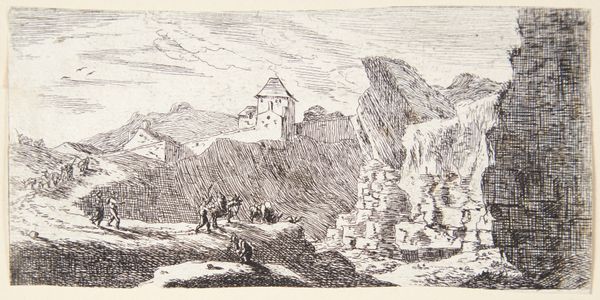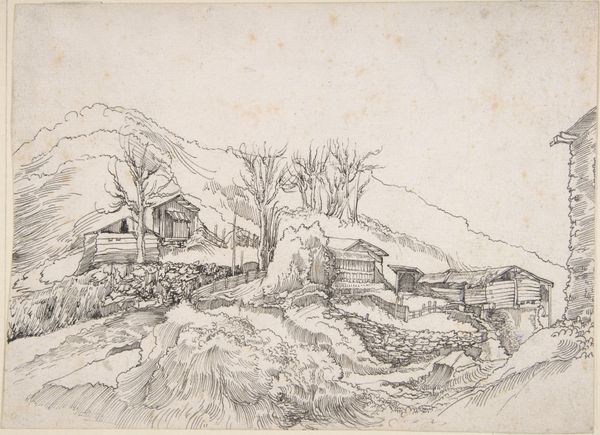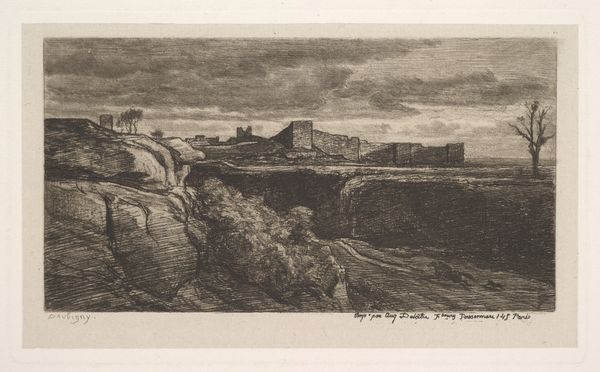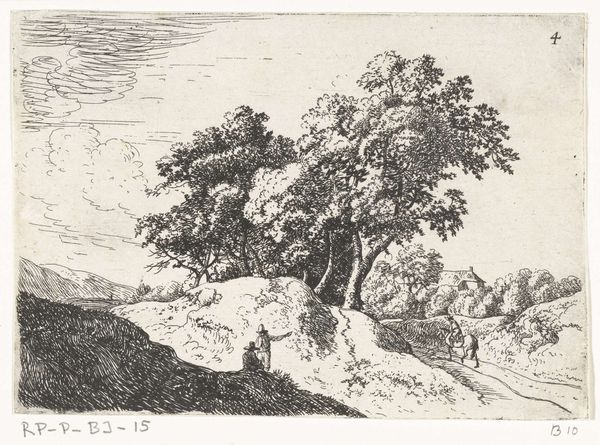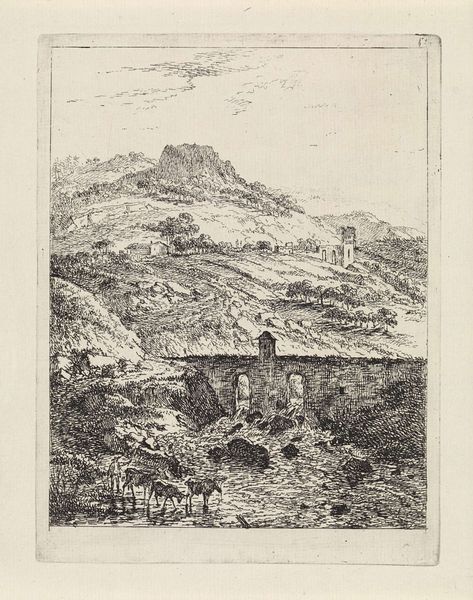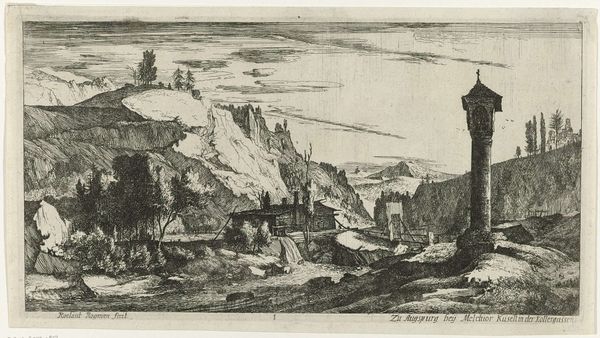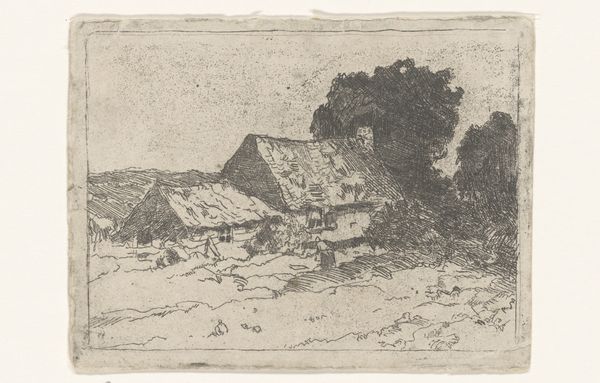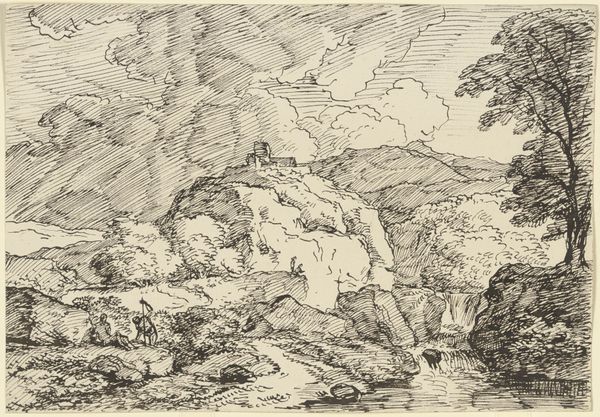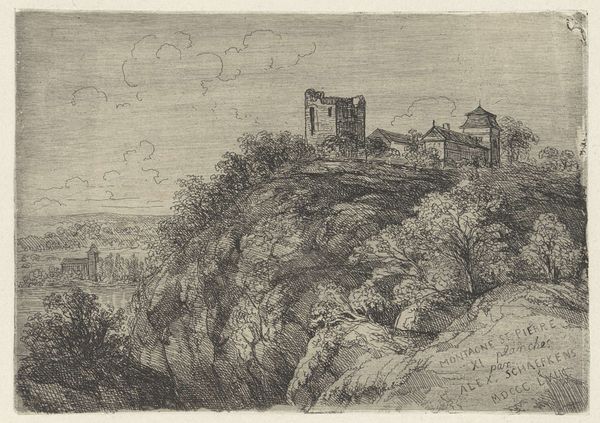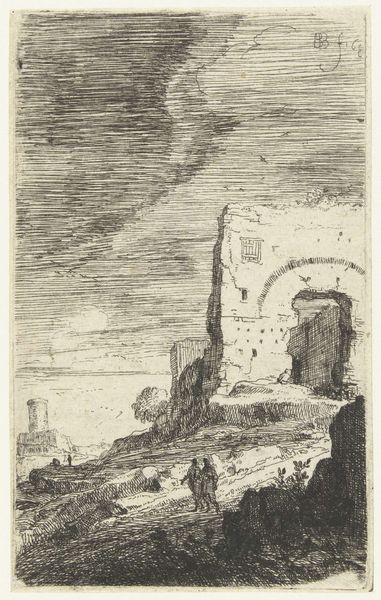
print, etching
#
baroque
# print
#
etching
#
landscape
#
cityscape
Dimensions: height 88 mm, width 108 mm
Copyright: Rijks Museum: Open Domain
Editor: Here we have Govert van der Leeuw's "Mountain Landscape with Fortress Ruins," an etching created sometime between 1655 and 1688. It has an undeniably somber, even melancholic quality, and it makes me wonder: what narratives do you think the artist is trying to convey with these ruins? Curator: That's a very astute observation. Beyond the immediate visual of crumbling stone, this landscape engages with complex themes of power, decay, and historical memory. Ask yourself, whose stories are embedded in those ruins? Were these structures once symbols of authority and control, and what does their degradation tell us about the impermanence of power structures? Editor: It's interesting to consider power, because initially the piece felt quite passive to me. Was van der Leeuw engaging with contemporary social issues by depicting a crumbling fortress? Curator: Absolutely. In the context of the 17th century, marked by shifting political landscapes and the rise and fall of empires, depicting ruins wasn’t just aesthetic; it was a commentary. The ruins might evoke feelings about specific conflicts or the transience of earthly power. What assumptions do we bring when we view a militaristic site falling apart? It might be a triumphant feeling of liberation from oppression for some and for others it could spark fear from instability. Editor: So the act of observing, then and now, changes the context. The etching, at once aesthetically pleasing and politically charged, opens up dialogue about societal evolution. Curator: Precisely! Art like this invites us to critically examine our relationship with the past, prompting us to consider whose histories are remembered and whose are forgotten. It makes us question the narratives we inherit and the ideologies they perpetuate. Editor: I never considered the loaded politics in an image that appeared, on its surface, to be only landscape. Curator: The Dutch Golden Age saw great shifts in politics so art becomes a vehicle for subtle but poignant dialogues concerning societal values and evolving world views. It underscores the vital role art plays in mirroring and shaping the society.
Comments
No comments
Be the first to comment and join the conversation on the ultimate creative platform.

